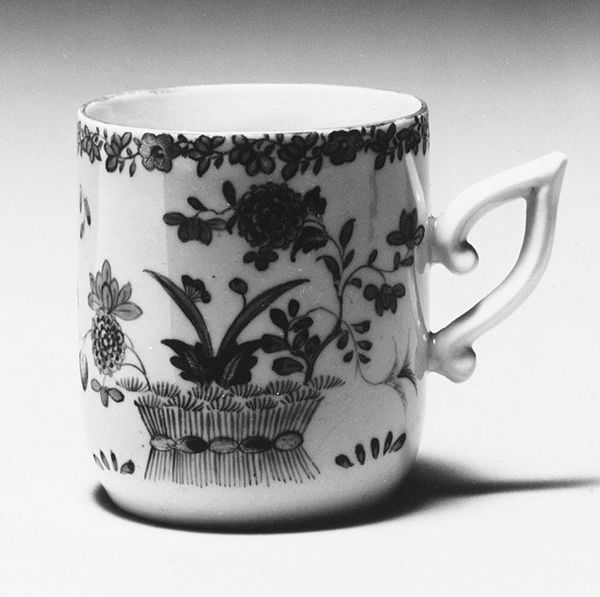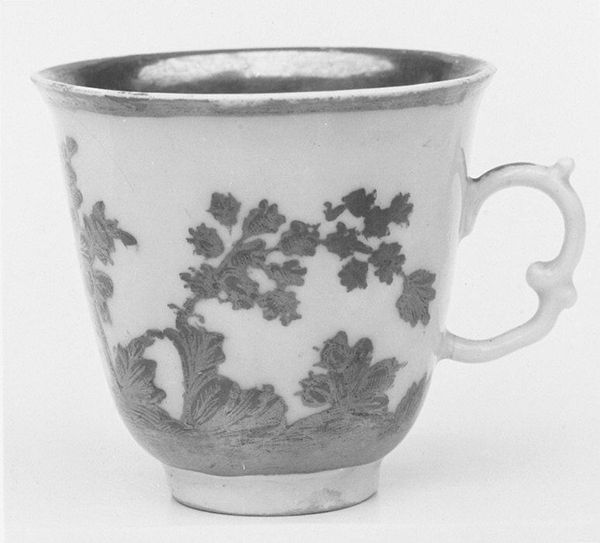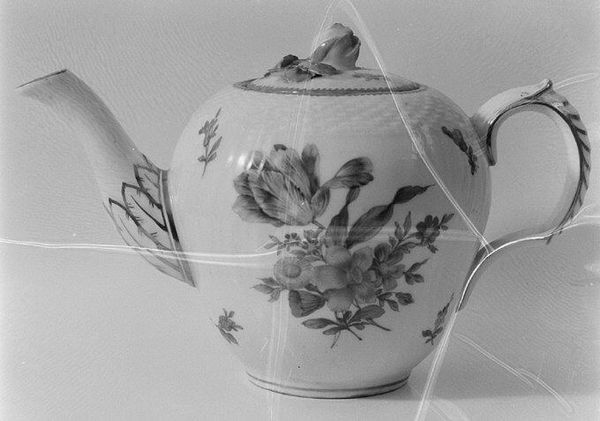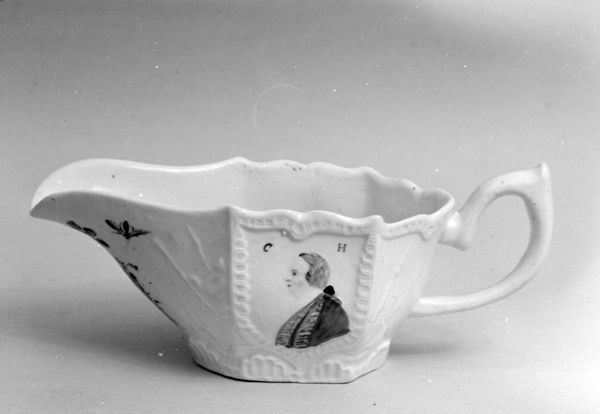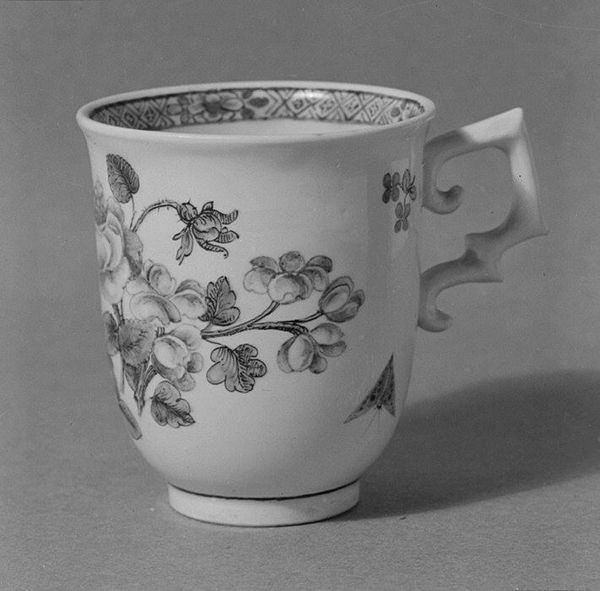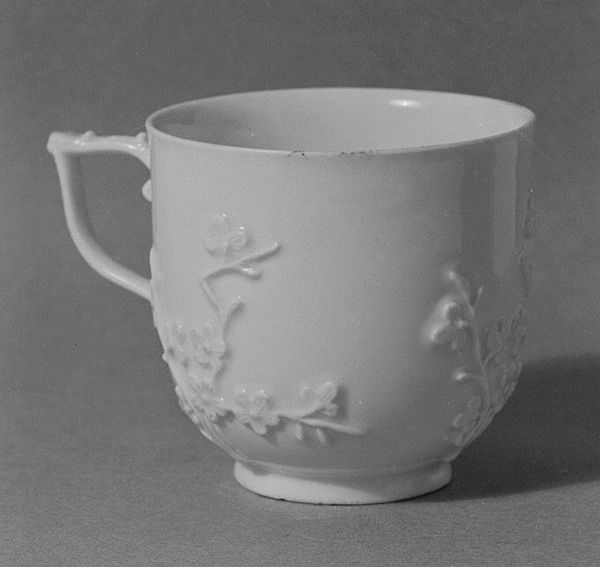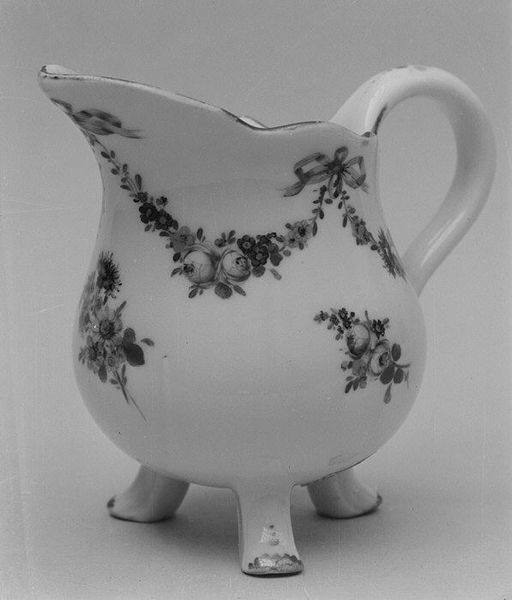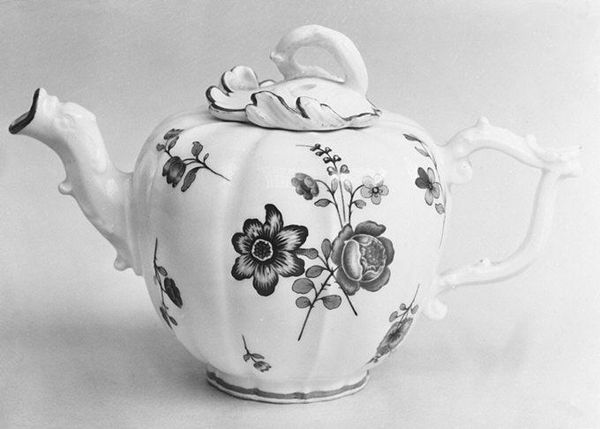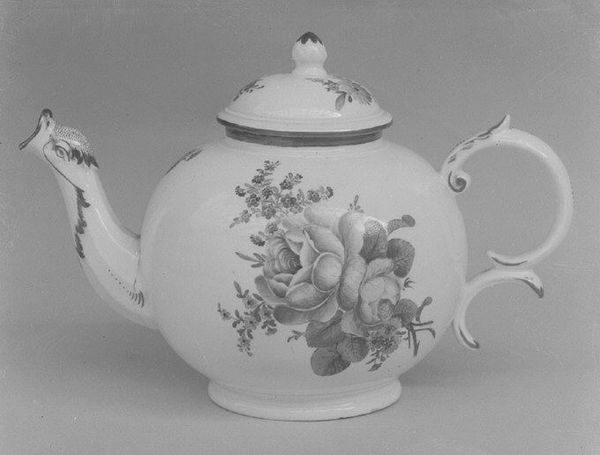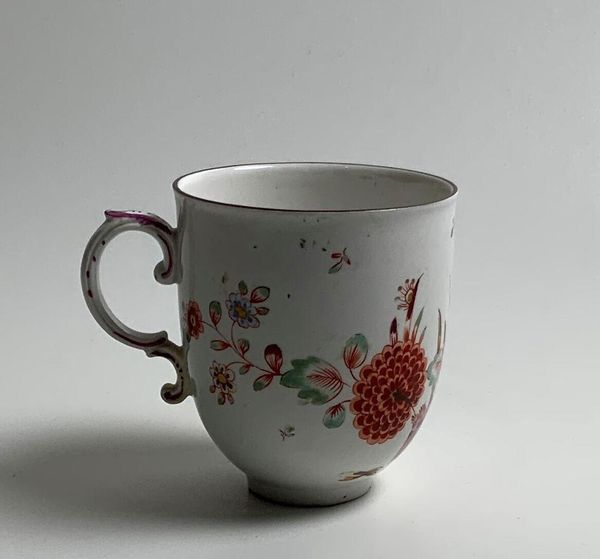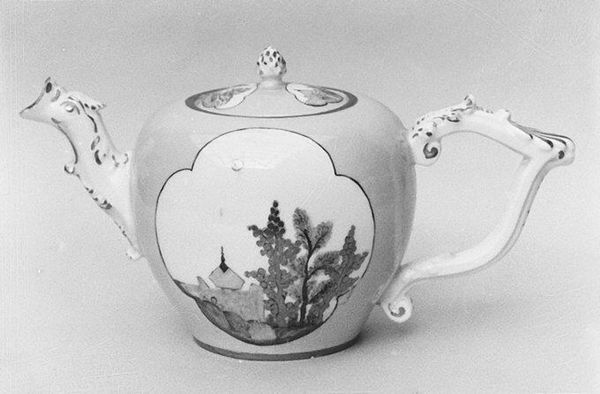
ceramic, porcelain, sculpture
#
ceramic
#
flower
#
porcelain
#
black and white theme
#
sculpture
#
decorative-art
#
rococo
Dimensions: Height: 2 1/4 in. (5.7 cm)
Copyright: Public Domain
Curator: It has a delicate, almost ghostly quality. It's charming, but feels... incomplete in a way. Editor: We are looking at a porcelain cup, made by the Derby Porcelain Manufactory between 1750 and 1760. It's currently held in the collection of the Metropolitan Museum of Art. The piece is an excellent example of the rococo decorative art, featuring meticulously crafted floral motifs. Curator: Rococo, yes, I see that flourish. And you mentioned porcelain, so it speaks to the era's burgeoning ceramic production. Derby porcelain was known for its craftsmanship; the specific clays, glazes, the workforce, would all affect its ultimate reception among buyers, yes? Editor: Precisely. The social status associated with possessing delicate porcelain such as this cannot be ignored. Owning it signaled a certain level of wealth and sophistication. Tea drinking, elevated through these vessels, became a whole public act. Curator: But these refined, handmade works relied on extracting resources and, importantly, cheap labour. Considering the piece today invites considering the exploitative processes. Does this cup perhaps speak of an idealized vision that obscured such reality? Editor: I think it also underscores a broader historical shift in consumer culture. Pieces like this cup helped construct an entire social and cultural environment, where everyday objects transformed from simple utilities into complex carriers of meaning. Curator: So, it's an object reflecting desire, trade, production... quite complex for its size, no? Editor: It truly is. Examining this small object allows us to see complex historical conditions surrounding labor and commodity in 18th century. Curator: Seeing beyond aesthetics makes for fascinating considerations around even a humble cup. Editor: Indeed, thinking about who made it and where it was enjoyed unlocks the wider conversation about artistry and commerce during its time.
Comments
No comments
Be the first to comment and join the conversation on the ultimate creative platform.
